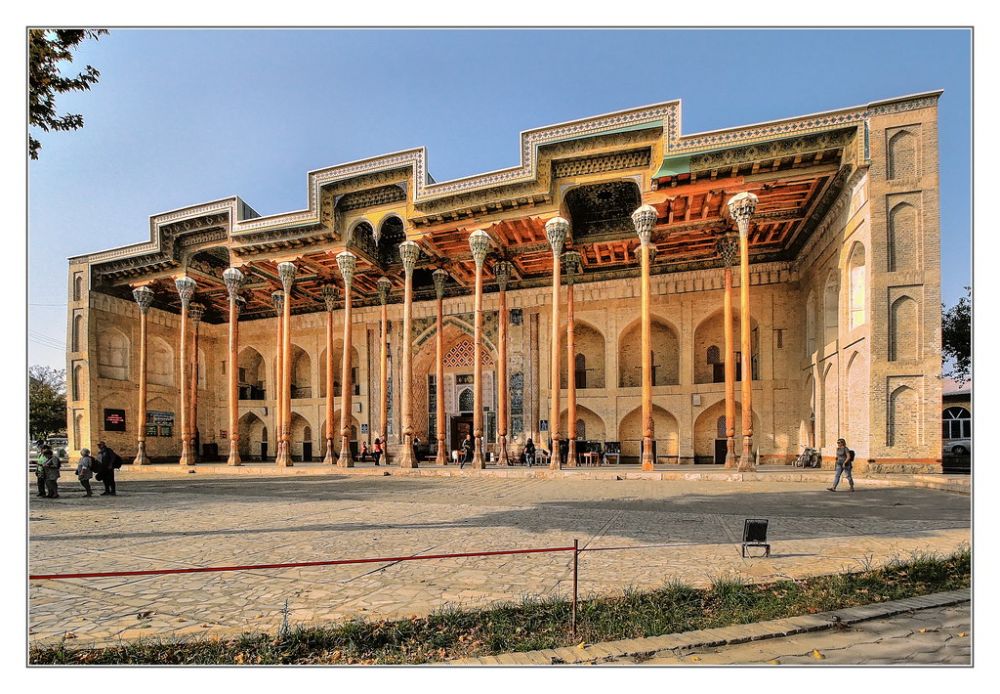The Bolo Haouz Mosque is an ancient mosque in Bukhara, Uzbekistan, located opposite the Ark fortress. Built in 1712, under the reign of the Janid dynasty, it served as the emir's official place of worship. This mosque is recognized for its stunning decoration and distinctive style that represents the classical Bukharan architectural design. The iwan, a Persian term for an open-fronted reception hall, is graced with beautifully carved wooden columns, each uniquely ornamented with intricate floral and geometric patterns. Bolo Haouz Mosque is distinguished by a large pond in front of the mosque, giving the mosque its name where 'Haouz' means 'pool' in Persian. The interior of the mosque exhibits vibrantly colored designs that adorn the walls and ceiling, creating a mesmerizing atmosphere for worship and contemplation. The mosque has been inscribed as a UNESCO World Heritage site as part of the historic center of Bukhara, recognized for its outstanding historical value and contribution to Islamic architecture.

